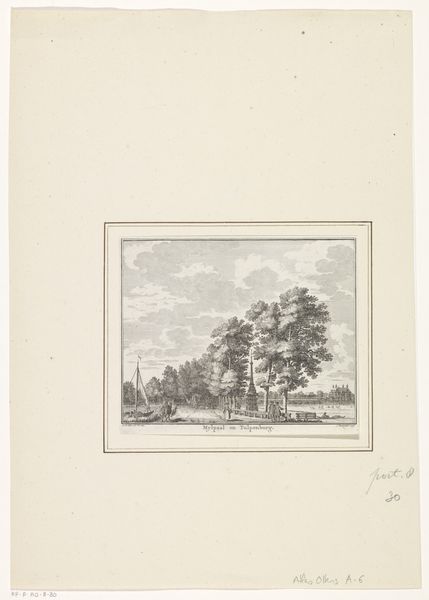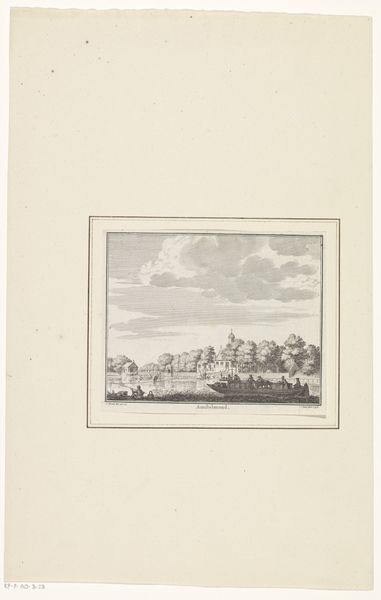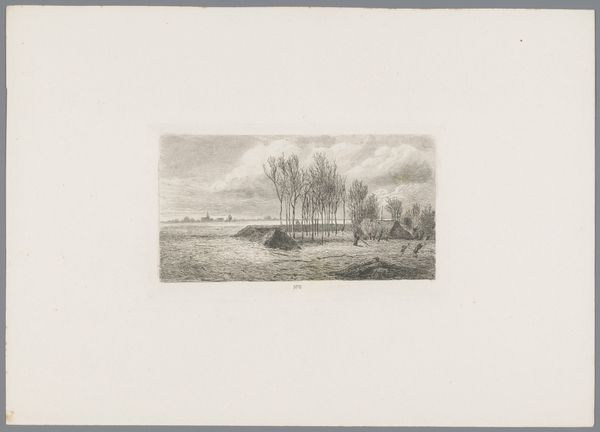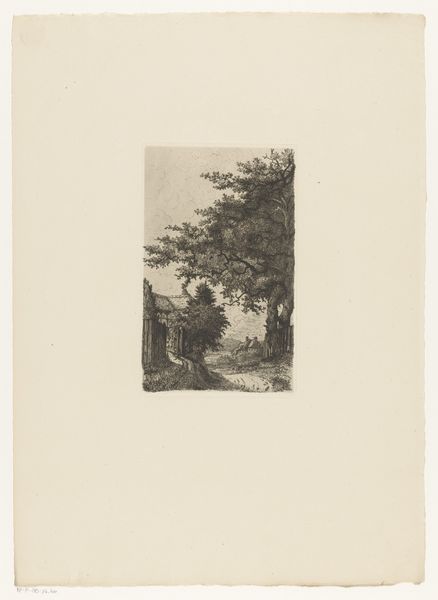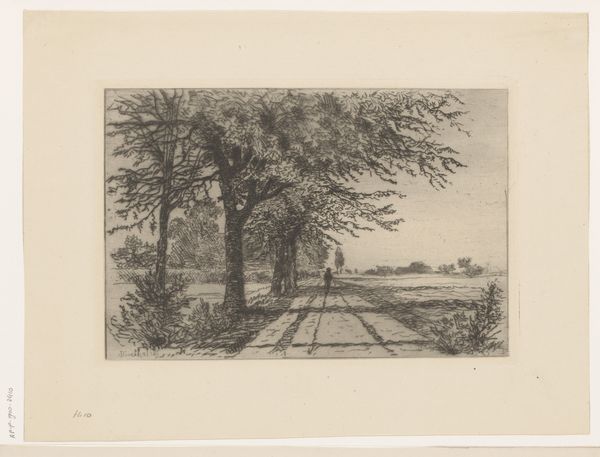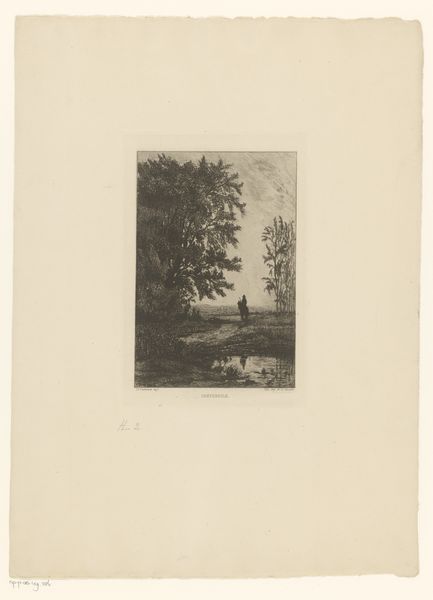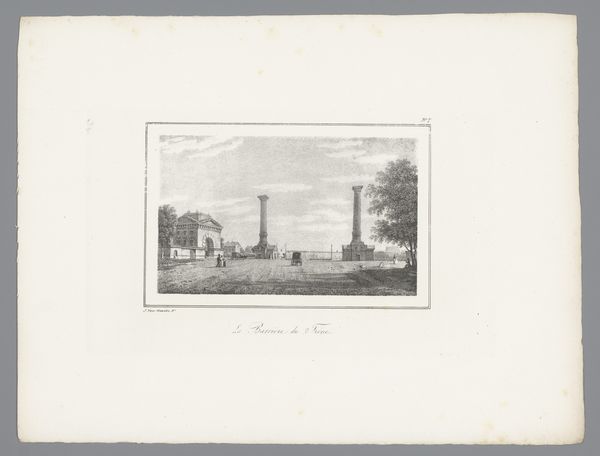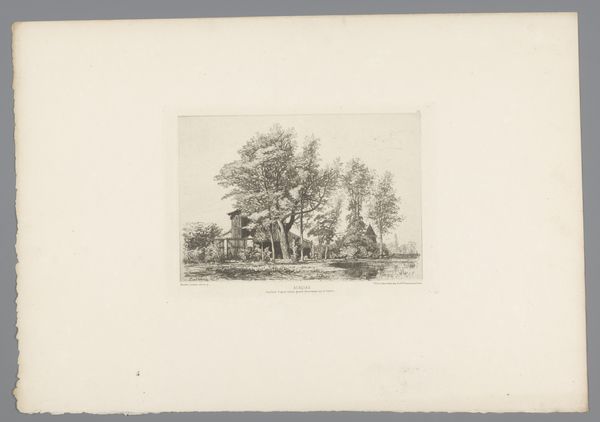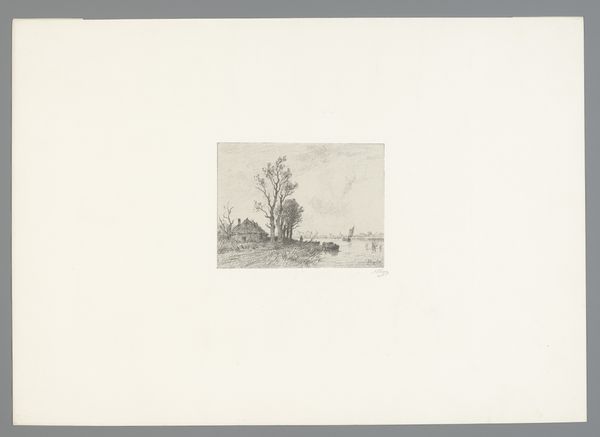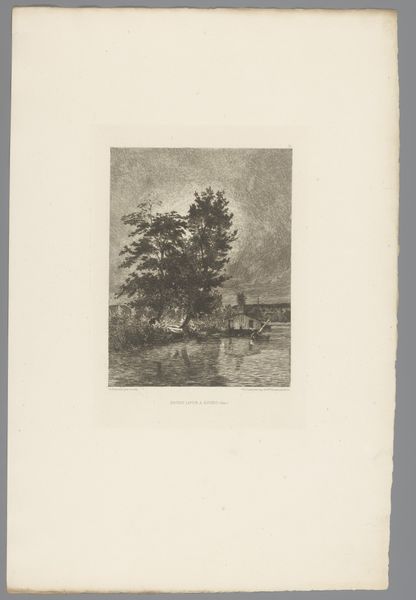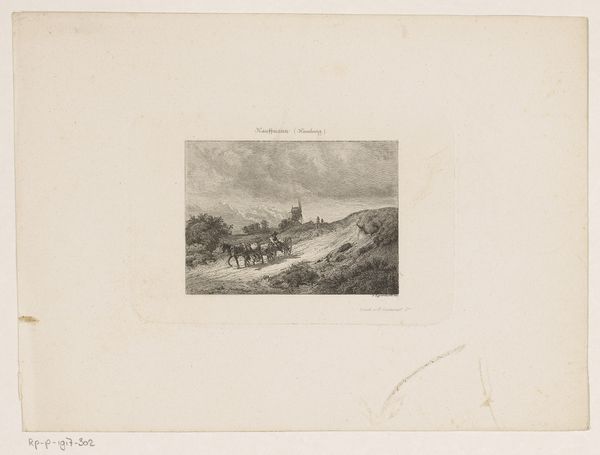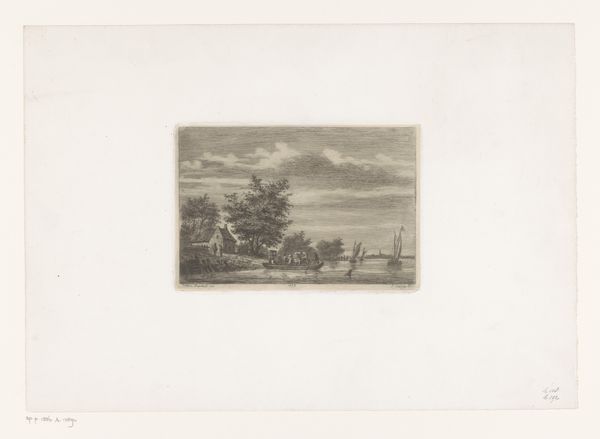
print, engraving
#
dutch-golden-age
# print
#
landscape
#
river
#
cityscape
#
engraving
Dimensions: height 132 mm, width 162 mm
Copyright: Rijks Museum: Open Domain
Curator: This print is entitled "View of the Amstel at the Molentje Inn," an engraving by Jan Caspar Philips, likely created sometime between 1736 and 1773. What’s your immediate reaction? Editor: Stark! It's an evocative scene rendered in precise, unforgiving lines. You immediately sense a certain quiet melancholy; life rendered in careful order, yet somehow devoid of true joy. It gives a clear picture of class structures. Curator: It’s fascinating how Philips uses linear perspective to draw the viewer’s eye towards that distant windmill, almost like a symbol of industry or even the march of time itself. What do you make of its placement? Editor: Windmills often represent prosperity and industry, sure, but considering the period, I'd consider also how the benefits of this productivity might not have reached everyone equally. Look at the seated figures – are they resting, or simply out of work? This era witnessed vast economic inequalities that such pastoral images often obscured. Curator: I agree that images can obscure certain truths. Perhaps this print, rendered with such deliberate detail, served to idealize rural life for those increasingly living in urban centers. The very act of engraving elevates the scene into a collectible artifact. Editor: Exactly! Prints like this were certainly more accessible to a broader audience than oil paintings, yes, but what realities are left out of these visual narratives? The air is clean, people rest peacefully - it presents such an incredibly romantic view. Curator: Yet there's also a certain formality to it, wouldn’t you say? The composition is meticulously balanced, the trees lining the road almost like sentinels guarding a picturesque, unchanging way of life. Even the sky, with its perfectly rendered clouds, feels deliberate and staged. Editor: I see a staged calm; perhaps a yearning for a return to the land, as capitalist energies intensified in the urban centers, especially among those in control, like Philips’ patron class. But to forget the labour... Well. I'm unconvinced. Curator: Fair point. But the appeal endures! Its symbols are, as such, highly complex! Thank you, that gave me a deeper look at this particular work. Editor: The pleasure was all mine! I love revealing hidden stories in these often oversimplified views.
Comments
No comments
Be the first to comment and join the conversation on the ultimate creative platform.
